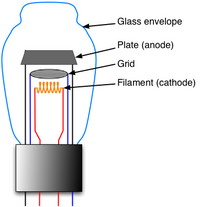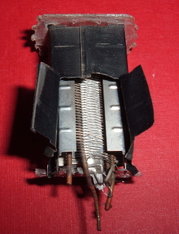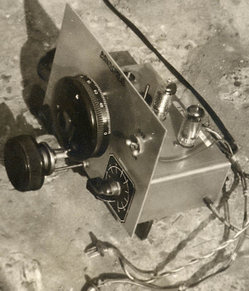Tubes
In electronics, a vacuum tube (U.S. and Canadian English) or (thermionic) valve (outside North America) is a device generally used to amplify, or otherwise modify, a signal by controlling the movement of electrons in an evacuated space. more...
Once used in most electronic devices, vacuum tubes are now used only in specialized applications. For most purposes, the vacuum tube has been replaced by the much smaller and less expensive transistor, either as a discrete device or in an integrated circuit. At the start of the 21st century there has been renewed interest in the vacuum tube, this time in the form of the Field-emitter microtube.
Operation
Vacuum tubes, or thermionic valves, are arrangements of electrodes in a vacuum within an insulating, temperature-resistant envelope. Although the envelope was classically glass, power tubes often use ceramic and metal. The electrodes were attached to leads which passed through the envelope in a way that was sealed air tight. On most tubes, the leads were designed to plug into tube sockets for easy replacement.
The simplest vacuum tubes resemble incandescent light bulbs in that they have a filament sealed in a glass envelope which has been evacuated of all air. When hot, the filament releases electrons into the vacuum: a process called thermionic emission. The resulting negatively-charged cloud of electrons is called a space charge. These electrons will be drawn to a metal plate inside the envelope if the plate (also called the anode) is positively charged relative to the filament (or cathode). This results in a current of electrons flowing from filament to plate. This cannot work in the reverse direction because the plate is not heated and cannot emit electrons. This very simple example described can thus be seen to operate as a diode: a device that conducts current only in one direction.
Development
John Ambrose Fleming, scientific adviser to the Marconi company invented the diode in 1904 based on an observation by Thomas Edison (Edison received U.S. Patent 307031 from this observation). The unidirectional current and construction of the original diode led to Lee DeForest placing another electrode, a bent wire or screen, between the filament and plate electrode in 1906. DeForest discovered that the current flow from filament to plate depended on the voltage applied to the grid, and that the current drawn by the grid was very low, being composed of the electrons which are intercepted by the grid. As the applied voltage of the grid varied from negative to positive, the current of electrons flowing from the filament to the plate would vary accordingly. Thus the grid was said to electrostatically "control" the plate current. The resulting three-electrode device was therefore an excellent and very sensitive amplifier of voltages. DeForest called his invention the audion, but it is better known as a triode. The tube equivalent of a transistor, triodes were used in early tube amplifiers.
Read more at Wikipedia.org






